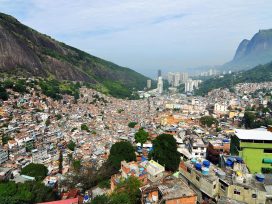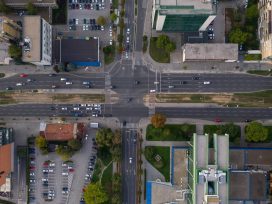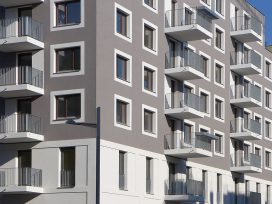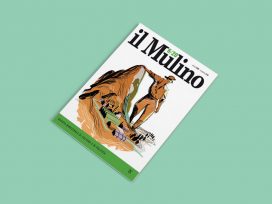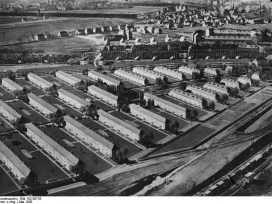“Just as Cartesian geometry is a reductive way of understanding space, so too is the measure of time, the clock, a reductive comprehension.”
Stuart Elden in Lefebvre 2004, xi
Public spaces are an integral part of urban space and its transformation (Madanipour/Knierbein/Degros 2014). In times of ongoing structural transformations, many cities need to deal with open urban spaces that have become obsolete or with public spaces undergoing drastic transitions (shrinking processes, post-industrial transformation, austerity measures, and so forth). Even conflicting interests for various uses often seem to be entirely absent from these spaces. Elsewhere, affected by human crises, climate change or simply rapid demographic change, public spaces come under even greater pressure if the city faces a drastic or traumatic situation, such as war, destruction or devastation. Here, interests in public spaces range from evacuation camps to places that serve basic human needs (such as temporary shelters). In both cases, public spaces are considered crucial vehicles for overcoming slow decline or fast-paced phases of shock.
Spatial catalysts for social change
This dérive volume on Resilience, rhythm and public space understands public spaces as spatial catalysts for social change, seeking to foster an understanding of the robustness of places by revisiting the resilience debate through the focus on rhythm. Resilience designates the capacity of cities to recover and adapt to such situations. To what extent do public spaces serve as flexible backbones to provide a city with the robustness to adapt to situations of drastic transformation and radical change? To what extent can seemingly obsolete places be rethought and recycled as places of transition where transformative forces would utilize their inherent potentials, instead of creating public spaces anew?
Resilience describes the positive capacity to recover from a traumatic situation or gradual decline by reshaping meaningful public spaces that facilitate context-specific adaptability. Rhythm relates to the differing embodied speeds, dynamics, and movements of the city, with the latter being understood as a (continuous) process of global urbanization. This selection of articles shifts the focus from symbolic and discursive dimensions of public spaces back to their material and social characteristics, thus enriching again the debate on public spaces as collective good and public infrastructure. Spanning from Brussels to Budapest, from New York to Istanbul and from Athens to Prishtina, it presents an initial step towards an inquiry into the potential robustness of cities by introducing an alternative time dimension to the debates of resilience in public spaces.
We can observe in many governmental and academic publications (see for example: UNISDR 2012; The Rockefeller Foundation 2013; Edwards 2009; Young Foundation 2010; Cabinet Office 2011; Comfort 2010) a trend to use resilience as an all-round remedy to describe a systems’ potential for recovery from adversity; its potential to overcome traumas and to reach again a certain state of dynamism. Several critical questions emerge in this context that need to be addressed: what state of balance is to be reached? Was there any state of balance before the city or place underwent crisis? For whom is a balancing and recovery needed? And who benefits from interventions introduced by resilience proponents?
Resilience, if we refer to the origin of the word, means to bounce back. It was first used by physical scientists to denote the characteristics of a spring, with an objects’ resilience describing the stability of its material and its resistance to external shock (Davoudi 2012). In the 1960s the notion of resilience began to enter the field of ecology. Resilience in ecology describes the magnitude of disturbance that a system can absorb before its structure changes, transforms or collapses. This reliance is based on a pre-existing state of dynamic balance and raises important questions: is resilience the ability to resume a former rhythm of urban life? How can we be sure that this rhythm was a just and desirable one, and that a return to it is what is needed? What is the normative stance of promoting such a focus on resilience? (Davoudi 2012) What is the rhythm of robust places, understood as a multiplicity of cyclic and overlapping individual social times that are part of a collective everyday, rather than a linear cord of nodes of moments that are to be knit one after the other? And to what extent can the focus on rhythms help to emphasize and foster the integration of everyday life patterns and inhabitants’ perspectives into theoretical and practical approaches to resilience planning?
Rhythm analysis
Time patterns that allow everyday life to flourish in a playful and absent-minded way are hardly graspable when following the dominant linear conception of time. That is why the French taxi driver, activist, philosopher and sociologist Henri Lefebvre produced his last book (partly co-written by his wife Catherine Régulier and later published by his friend René Lourau after his death in 1992) on Rhythm analysis (Lefebvre 2004): to facilitate an understanding of parallel, overlapping or non-synchronous times, moments and situations. Initially coined by the Portuguese philosopher Lúcio A. Pinheiro dos Santos in 1931, and further developed by Gaston Bachelard in 1936, Lefebvre’s rhythm analysis revealed crucial ambivalences of time conceptions in understanding everyday life under conditions of capitalism. Le quotidien, the everyday, der Alltag – all three terms, taken from French, English and German respectively, employ at least a dual meaning, one related to the mundane and ordinary minutiae of everyday life, the other referring to repetition and the repetitive character of spatial practice, connecting in a more abstract sense to a different reading of space, time and history (ibid.).
On a more palpable scale, rhythms play a major role regarding acts and practices of civil resistance and struggles of appropriation. Through rhythm, civil, and therefore social, time seeks to and succeeds in withdrawing itself from linear, mono-rhythmic, measuring/measured time. Thus public space ‘spontaneously’ becomes a place for walks and encounters, intrigues, diplomacy, deals and negotiations. That way, the time and the rhythms of the people who occupy this space are linked back to space (cf. ibid. 2004: vii, 96).
Through rhythm considered as a lens or a filter to rethink different themes related to public space, alternative ways of investigating the robustness of spaces can be practiced, conceptualized and discussed. In that respect, rhythm rather serves as a tool than as a mere object of analysis; ranging from an enquiry of the spatiality of the body, over the mechanical repetition of cycles of social (re)production in capitalist societies, to the local time patterns of global urbanization processes. Whereas a focus on resilience in understanding the potential robustness of public space might suggest an emphasis on duration and continuity, and thus a sort of linear balance over time, our perspective suggests a cyclic reading of a place’s robustness. With this in mind, we are interested in how particular places are able to deal with particular times and situations when existing orthodoxies are open to challenge, when things have the potential to be overturned or radically altered – moments of crisis in the original sense of the term. These are the moments when rhythms are broken, and may disappear or reemerge with a new beat. These moments of space are condensed into new rhythms and their modes can be analyzed by using rhythm as a tool. As far as rhythm analysis concerns the everyday rites, ceremonies, fetes, rules and laws, there is always something new and unforeseen that introduces itself into the repetitive: difference (cf. ibid. 2004: 6).
A textual walk through a quarter in Brussels
This issue’s different contributions are produced by a planning theorist/photographer in Berlin; a Parisian sociologist investigating Manhattan; an architect from Nuremberg working on micro-macro vernacular places of Athens; an ethnographer from Stockholm interested in urban life in the capital city of Kosovo, Prishtina; two landscape architects from Hamburg and Istanbul reflecting on Turkey’s biggest city at risk; and a British urban anthropologist attracted by simple life in the streets of Budapest. We would like to invite you to briefly join us on a textual walk through a quarter in Brussels – a walk that seeks to illustrate a cyclic reading of a place’s robustness, and its characteristics. It expands the conception of rhythm from everyday life practices in the present to different presents that a place has witnessed over decades of decay and top-down interventions, up until social practices and different uses appropriated the place again with their own diverse rhythms:
The Robinson vacant plot in Brussels is a space that has undergone several transformations over the last few decades (Degros 2013). Located in the interior of the block, this space has experienced several waves of occupation: from the ancient baths of Schaerbeek to an educational garden for schools, and most recently a collective green area with a school garden and recycle station, giving it a new significance within the district. The gardens currently provide a natural capital for the neighbour hood Schaerbeek – a very dense area in the lower part of Brussels with a vivid population. Remains of the former district baths can still be found on this vacant plot. In the past these Schaerbeek baths were very popular – a piece of public infrastructure in the densely built area, and a natural meeting point for the inhabitants. The ensemble consisted of two buildings connected: one along the street, one in the interior of the block.
The baths were closed in 1946, after the war, and destroyed in 1950 with only the building located along the street remaining, together with ruins from the pool located in the inner yard. Although there were several projects that aimed to reconstruct the baths, none of these projects were ever realized. Access to the land was closed off and the park fell into disrepair, with lush vegetation, including some beautiful trees, which are now over half a century old, able to grow untouched by vandalism and construction works. In the 1990s, the municipality had planned to build a police station on the site; however, the waterlogged ground and the strong mobilization of residents to safeguard the green space for the benefit of the community prevented the project. After the strong mobilization of the inhabitants, the first wave of occupation that followed transformed the heart of the block into an educational garden Jardin Robinson. During the time it was the site of the municipal baths, access was somewhat limited although collective in purpose. Later, after the public-bath use, access to the garden was partly restricted to a semi-public space as only schools were allowed to benefit from the place’s potentials as a pedagogical garden. Due to a lack of continuity in the space’s occupation over time, and due to a weak commitment of the school, the plot developed into an urban interstice that some people chose to make use of – the last owner used it as a quad field to the despair of the other inhabitants of the neighbour hood.
This was the case up until 2004, when several inhabitants with some local associations, with the help of some regional and municipal governmental sponsoring decided to reclaim the site for the neighbour hood. They organized reflection groups concerning the future of the place and, from these, it became apparent that the inhabitants’ objective was to rediscover the spirit of the place and the baths. They wanted to re-introduce the potential of the place as a meeting point for the district – a place of neighbour hood cohesion. They decided to transform the existing fabric into an urban landscape dedicated to the neighbourhood and managed by local residents, as well as to explore its already increased ecological value, instead of using the site for project development and construction investments. This new use-based approach enabled the development of a long-term plan to further design and manage the garden as a co-operation between local associations and residents. The garden was reorganized in order to articulate various functions such as an educational garden and a lawn for hosting events. These spaces can be used to organize various activities with the aim of strengthening social relations in, and collective organization of, the neighbour hood.
A public space of collective use
Today called Kessels’ space the garden is now owned by the municipality who designed it in close collaboration with different associations and the inhabitants. Currently, it consists of an open green area surrounded by trees, a pedagogical garden, a place to compost the vegetal rubbish that is regularly collected from the surrounding households, and a small covered place with sanitary facilities. In the remaining bathhouse building, the municipality decided to host an organization that helps children with their homework after school. At the same time, this organization functions as the concierge of the park. Another organization, which is also located there, teaches young people how to garden. This is achieved by involving them in the maintenance of the park. Both organizations developed several events that included the neighbour s in the management of the park. For example, every Sunday they would go round the neighbour hood with a wheelbarrow collecting people’s vegetal rubbish to make their own compost. They also worked in close collaboration with the adjacent schools who finally adopted parts of the garden as well as some bee houses. Physically, the place successively changed from a built inner yard with a pool to a green park with trees.
The overall historic process of the Jardin Robinson was characterized by altering phases of success, decline and decay; today, its significance for the neighbour hood has been re-established – it serves again as a meeting point and social node in the district. The process necessary to reach this new stage has been a long-term one but, more importantly, it is based on the initiative of the inhabitants. The region and the district did, however, help in terms of financial support for the acquisition, as well as mediating with the former owner to develop the park into what it is now.
Kessels’ space in Schaerbeek can be characterized in terms of resilience that has been (re)established by gradual local initiatives who actually brought a new collective future to what remained in the place of the past (the public bath) and the controversial present (quad field). This public space of collective use represents a type of resilient space where interventions by urban dwellers and urban professionals deal less with image and physical design, and more with empowerment of local ideas and initiatives as a means of transformation. The involvement of local associations, inhabitants or local entrepreneurs is the driving force behind the several steps that lead to the realization of the actual garden. In this respect, the conception of time was of crucial importance (Gwiadzinski 2007). We can observe that several top-down interventions to transform the place failed: the development of new baths and the proposed construction of a police station, for instance, were not successful. Physical decay and environmental succession entered a new balance; however, this came with a disadvantage for the local population who were not able to access and use the space for several decades.
Finally, the recent appropriation of the local residents generated its own time patterns, marked by old visions, diverse pitfalls, and new intents. The whole reactivation of the area took about 70 years; time being a consequence of it not necessarily meeting the pressing claims of capital investment to create spatial returns on the vacant plot. This is a key aspect as the district unusually decided to privilege a space for social cohesion for the long-term, to create collective benefit of the neighbour hood; instead of investing into the plot to develop a short-term profit project for individual benefit.
The capacity of public spaces
In the Brussels case, we have introduced the focus on an alternative time conception to introduce a revision of the concept of resilience based on a policy process to strengthen social ties in the neighbour hood. Thereby, we initially shed light on the capacity of public spaces to serve as a robust pillar in constantly changing urban societies, where different generations of users bring along different conceptions of time and rhythm. A focus on rhythms to revisit current debates on resilience might therefore offer the possibility of capturing the social dynamics of a place over generations, and its different uses, more in depth. Long-term thinking and slow changes, however, are sometimes the luxurious condition of those cities that face well-being, a good resource redistribution and urban peace; and have not become shattered by conflict or disaster.
As follows, the chosen compilation of articles is intended to enhance this initial debate regarding the questions of how, or to what extent, public space can, in diverse ways, absorb shock or help to cope with spatial traumas. We are also interested in understanding how far this potential for robustness in times of drastic, unwanted or unanticipated transformative shock might be related to public spaces’ capacity to smoothly accommodate social change as a meaningful place for everyday life in the city. We therefore take six very different examples in terms of social conditions, current state of balance or misbalance, and in terms of cities’ particular societal and cultural contexts. The contributions do not suggest foolproof remedies, but rather inform the reader of possible perspectives on resilience, rhythm and public spaces coming from planning theory, urban studies, sociology, architecture, anthropology, landscape architecture and ethnography.
The case of New York sheds a light on the pitfalls of institutionalized participation based on public reasoning, while emphasizing the potential for inclusion by resilient social uses that might even turn into acts of civil appropriation and resistance. In Athens, the Polykatoikia – a very simple and easily reproducible housing building type – shows how a machine-like repetition of façade and construction elements is actually contested, challenged and transformed by everyday use patterns of people inhabiting the indoor spaces in a semi-private and semi-public way – thus creating a strong link to the public life of the city. The picture essay on Berlin introduces visual tranquility and broaches the rhythms of micro-places on the former airfield where acts of resistance and appropriation have overcome “horror vacui” (Roskamm 2011) of linear-time based planning visions pursued by Berlin planning authorities. The Prishtina case teaches a lesson on the role streets may have in post-conflict cities where the memory of pre-conflict everyday uses and meaningful practices may eventually collide with the induced patterns of post-conflict migration, which mix old and new urban inhabitants together in a completely new spatial organization. Here, the rhythms of oppressed or tamed everyday life patterns before the conflict are mostly destroyed during the conflict and completely reconfigured after the war. The streets of Prishtina in this sense play a key role in breaking spatial and social shock, and help the entire Kosovan society to reinterpret their meaningful places. This is not the case as regards resilient planning measures promoted through urban politics and formal planning in Istanbul, which actually support and make legal room for rapid and socially exclusive urban transformation that benefits homeowners and investors, rather than those parts of the urban population that run the risk of losing their lives during the future earthquakes expected to happen in the Bosporus region. Here, everyday life patterns and the rhythms that intuitively unfold in public spaces are hardly, if at all, taken into consideration. In the People’s Theatre Street in Budapest, however, the rhythms of gentrification and aesthetic purification of the Magdolna Quarter in the eighth district Józsefváros are contested by resilient everyday uses of the street, where people decide to make their life and where resilient acts of everyday use do eventually gain momentum; turning into acts of resistance by marginalized groups whose everyday use patterns are tamed and timetabled by capitalist interventions in the street. And the street goes on…
Bibliography
Cabinet Office (2011): Strategic National Framework on Community Resilience. London: Cabinet Office.
Comfort, Louise K; Boin, Arjen & Demchak, Chris C. (eds.) (2010): Designing Resilience: Preparing for Extreme Events. Pittsburgh: University of Pittsburgh Press.
Davoudi, Simin (2012): “Resilience: A bridging concept or a dead end?”, Planning Theory and Practice 13, no. 2: 299-333.
Degros, Aglaée, De Cleene, Michiel (2013): Bruxelles, à la reconquête de ses espaces.
Edwards, Charlie (2009): Resilient Nation. London: Demos.
Gwiazdzinski, Luc (2007): “Redistribution des cartes dans la ville malléable”, espace populations sociétés 2-3: 397-410
Lefebvre, Henri (2004): Rhythmanalysis: Space, Time and Everyday Life. Continuum Books. Originally published in French as Éléments de rhythmanalyse by Éditions Syllepse, Paris, 1992.
Madanipour, Ali; Knierbein, Sabine & Degros, Aglaée (eds.) (2014): Public Space and the Challenges of Urban Transformation in Europe. London: Routledge.
Roskamm, Nikolai (2011): “Die Utopie des Nichts. Zur Transformation des Tempelhofer Feldes in Berlin”, dérive – Zeitschrift für Stadtforschung 42, no. 1 (2011): 11-17.
The Rockefeller Foundation (2013): “100 resilient cities”, NY.
UNISDR (2012): How To Make Cities More Resilient, A Handbook For Local Government Leaders. Geneva: United Nations.
Young Foundation (2010): Building Resilient Communities. London: Young Foundation.
